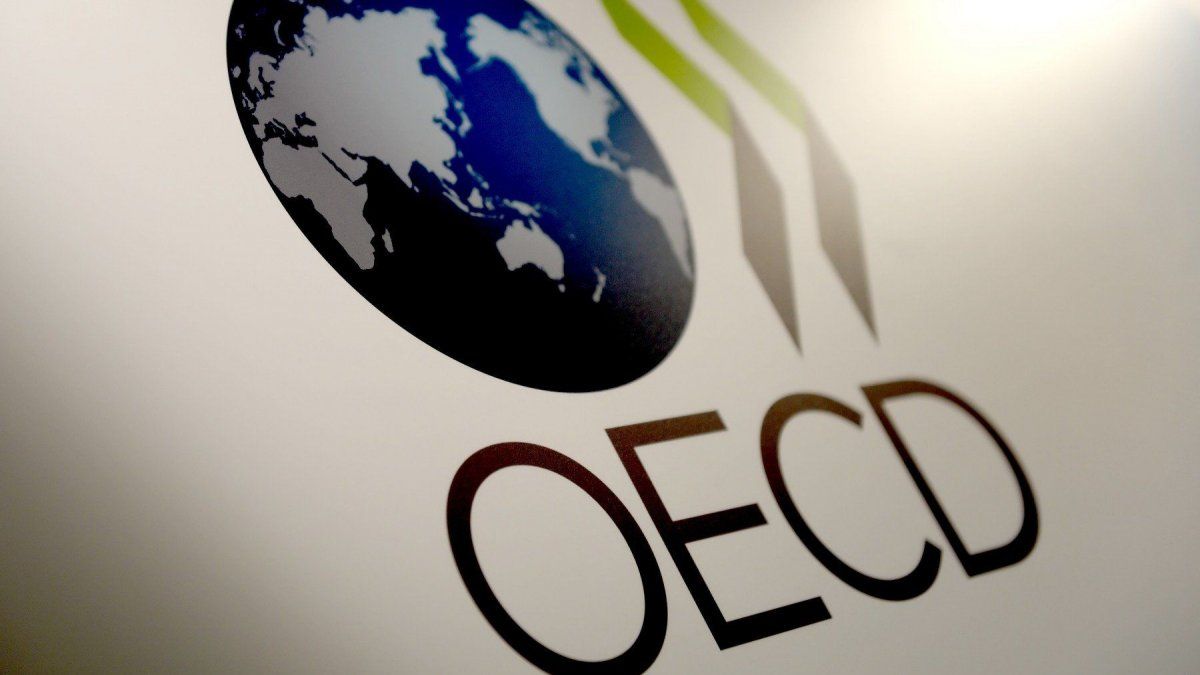The agency’s forecasts imply a correction in the orientation of the projections drawn in the last report last September, when the fall in GDP had worsened from the previous 3.3% to 4%, while the cut it has been making in the inflation estimate deepens, since in the previous report it had gone from 208.1% to 147, 5%.
This waythe new perspective reflects a contraction of the economy 2 tenths below that expected in September and inflation 26.6 percentage points below the previous forecast, which marks a notable downward revision.
For the OECD, the economy in general shows signs of improvement
In this regard, he highlighted that “short-term indicators show signs of improvement,” indicating that “quarterly growth rebounded to 3.4% in the third quarter, according to sequential readings of a monthly activity indicator.”
In this context, he highlighted that “Agriculture and livestock, and mining were the sectors with the most significant growth, and manufacturing, construction and commerce also experienced a strong recovery. Real credit is increasing. Consumer confidence increased by 8.8% in October.”
Furthermore, he considered that “disinflation continues, as monthly inflation reached 2.7% in October, its lowest level since November 2021″, and noted that “salary increases have begun to exceed inflation since April”.
Likewise, he appreciated that “sand recorded primary budget surpluses from January to October 2024something Argentina had not seen since 2010. These improvements are putting fiscal consolidation on track to achieve the primary fiscal surplus goal of 1.5% in 2024, in line with closing the overall fiscal deficit.
In relation to the shared perspectives for Argentina in 2025, the organization expects an evident improvement in the current scenario by foreseeing a activity growth of 3.6%, lower than the 3.9% projected in the previous analysis and a price variation that reaches an increase of 29.8% annually, below the 46.7% previously forecast.
The scenario that is coming for Argentina in 2025
When specifying the scenario observed for the country, the OECD highlighted that “in Argentina, tentative signs of recovery are observed in recent months after a contraction since mid-2022” and stated that “inflation in Argentina and Turkey is projected to decline. will remain in double digits in 2026, but will decrease significantly from current rates.”
Looking ahead to the coming months, expect a better outlook for consumption considering that “the recovery of private consumption will be supported by increases in real wages in a context of declining inflation and strengthening of the labor market.”
At the same time, he maintained that “Investment will benefit from increased confidence as macroeconomic imbalances gradually reduce, with greater support for a new preferential regime for large projects”, while predicting that “imports will recover as domestic demand increases, outpacing the growth of exports” and warned that “delays in the implementation of the planned reforms are a significant downside risk to the projections.”
Along these lines, he expressed that “fiscal consolidation should continue”, noting that “the central bank has been reducing its quasi-fiscal liabilities and closing several indirect sources of money creation” and estimating that “easing import restrictions and exchange controls would provide an additional boost to growth.” However, he stressed that “Higher domestic real interest rates will be needed to boost demand for domestic currency assets as exchange controls are relaxed.”
The exit from the exchange rate, according to the OECD
OECD analysts stated that there is “a challenging reform agenda ahead to stabilize the economy”, noting that “renewed efforts will be necessary to sustain fiscal consolidation.”
In that sense, they postulated that “possible options include improving the governance and targeting of some social protection programs; rationalizing energy, transportation and water subsidies; and increasing the effectiveness of tax collection by simplifying the tax system.” , eliminating distorting taxes and reducing regressive taxation.
Furthermore, they stated that “Positive real interest rates will be needed to contain inflation and generate demand for the domestic currency once capital controls are lifted, but this will have fiscal costs, adding to the difficult balancing act facing macroeconomic policies.”
Dollars
For the OECD, it will be necessary to have positive real interest rates to correct possible imbalances due to the exit of the stocks
While in the framework of production, they considered that “to boost productivity growth, it will be necessary to wide-ranging structural reforms, that include further advances in streamlining regulations, lower barriers to market entry, increased competition, lower trade barriers, and training programs that respond to employers’ demand for technical skills.”
What the OECD expects for the main variables of the world economy
At a general level, “it is projected that the global economy will remain resilient despite significant challenges,” as detailed by the OECD in its Economic Outlook, where it projected global GDP growth of 3.3% in 2025, compared to 3.2% in 2024 and 3.3% in 2026.
Regarding the price variation, he stated that “it is expected that the inflation in the OECD to decrease further, from 5.4% in 2024 to 3.8% in 2025 and 3.0% in 2026, supported by the still restrictive stance of monetary policy in most countries”, outraged that “overall inflation has already returned to the central bank’s objectives in almost half of advanced economies and about 60% of emerging market economies.
Source: Ambito




